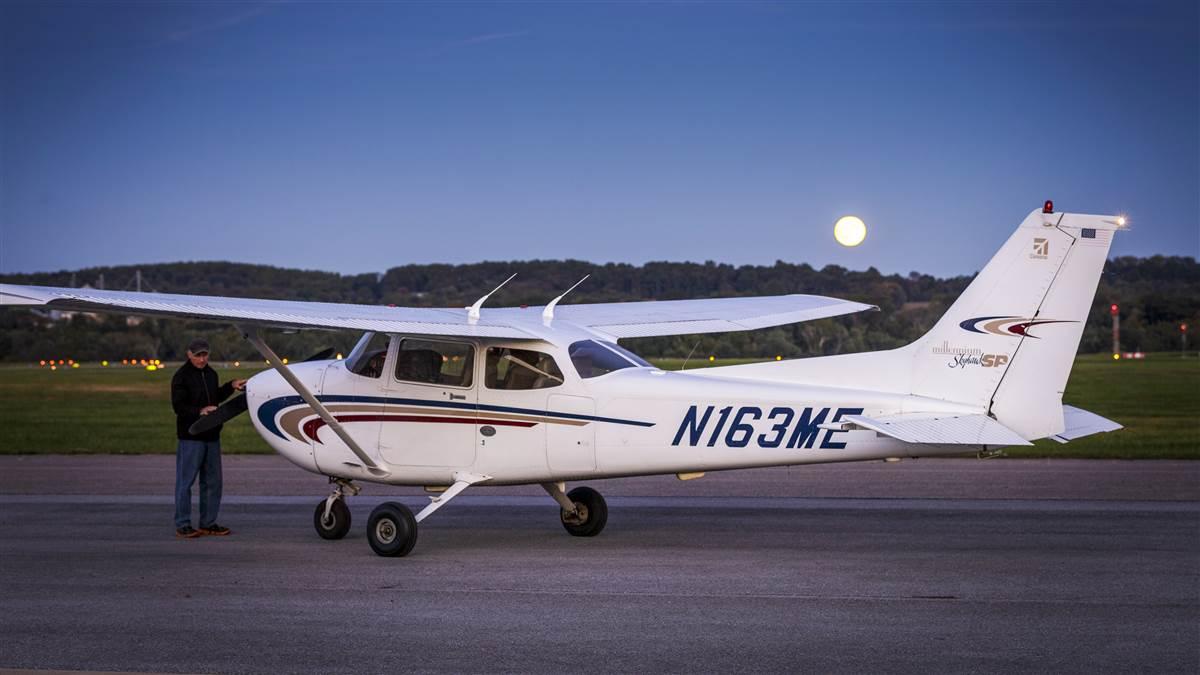Night falls
10 tips for flying in the dark
Flying at night presents additional challenges for pilots, but also rewards.

Photography by Mike Fizer.
Night conditions can be especially smooth, serene, and visually captivating—and there’s usually far less air traffic. But just as daytime flight conditions vary, that’s especially true at night.
Flying over the Los Angeles Basin on a clear night under a full moon, for example, has little in common with traversing Lake Superior under an overcast and new moon. One is a light show. The other is like diving in an ocean of black ink.
Here are 10 tips to make night flights more enjoyable and less stressful.
- Plan a route that avoids large bodies of water, mountains, or remote terrain. Such places are devoid of any visible horizon and that can make staying oriented difficult.
- Know well in advance how to dim your avionics. As the sun goes down and darkness sets in, avionics screens can become distractingly bright and increase unwanted reflections.
- Test your flashlight before you get in the airplane, keep it within easy reach, and bring extra batteries. Better yet, bring an extra flashlight.
- An LED headlamp is ideal for preflight inspections because it keeps your hands free to check oil, fasten latches, and touch things. If you can wear that headlamp in the airplane, do it.
- If flying VFR, get flight following. Having an air traffic controller to provide vectors to an airport and help keep you away from high terrain can be a lifesaver. But realize ATC is a backstop for VFR pilots and IFR aircraft are any controller’s priority.
- Realize it’s easy to blunder into clouds at night so be ready to shift to an instrument scan—and trust your instruments.
- Use the autopilot extensively if you’ve got one.
- Load an instrument approach in your GPS navigator, preferably one with vertical guidance, even when flying in visual conditions. If none are available, use the OBS mode to provide a course to follow that aligns with the landing runway.
- Make full use of PAPI and VASI lights to stay clear of obstacles on final approach and expect the rush of runway edge lights to make it feel like you’re flying too fast.
- After landing, as you taxi to the ramp, turn off your landing lights as a courtesy to marshalers.


Dave Hirschman
AOPA Pilot Editor at Large
AOPA Pilot Editor at Large Dave Hirschman joined AOPA in 2008. He has an airline transport pilot certificate and instrument and multiengine flight instructor certificates. Dave flies vintage, historical, and Experimental airplanes and specializes in tailwheel and aerobatic instruction.

